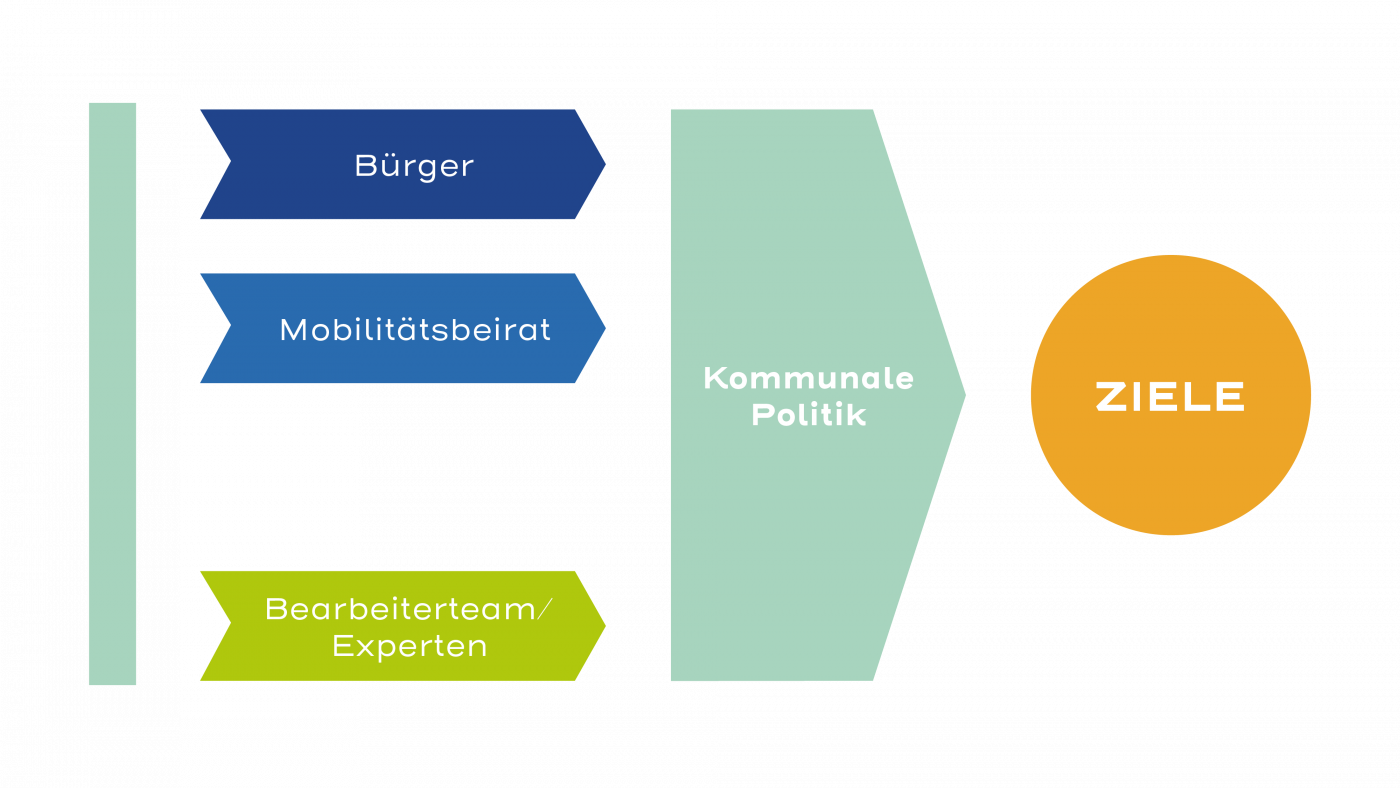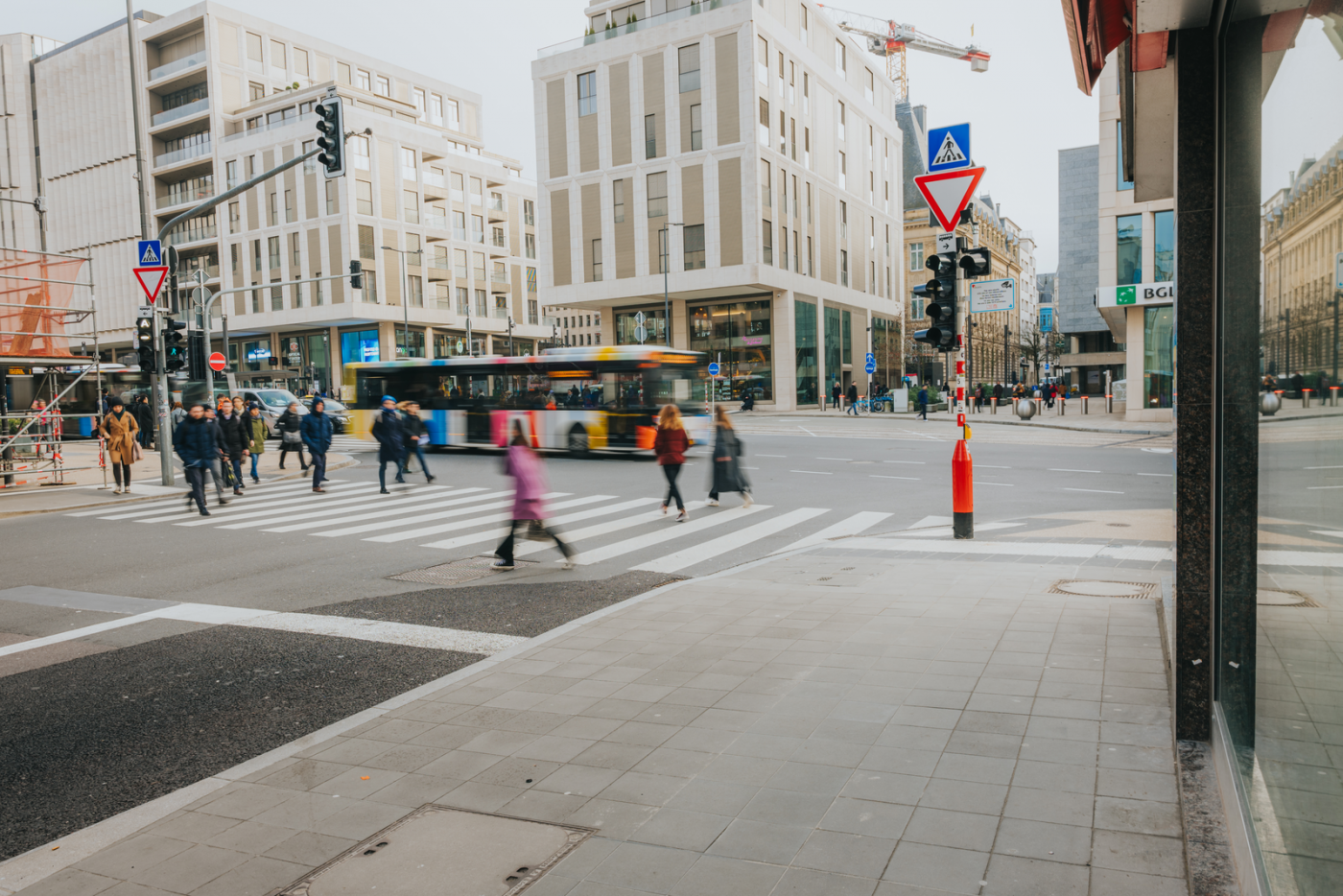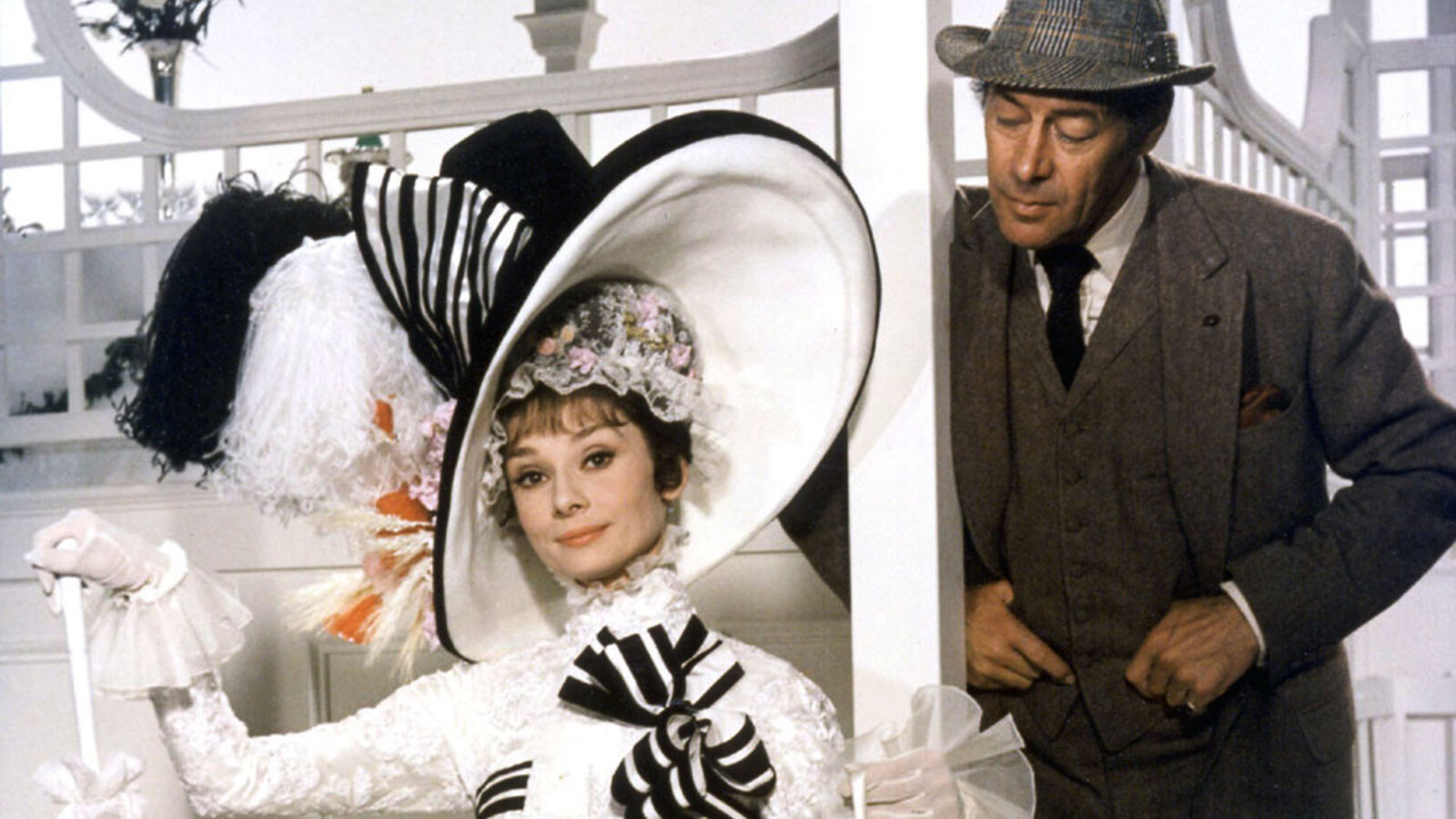Summary
The objectives of the mobility plan form the basis of the next steps in the process – namely the development of the scenario-based and strategic measures – by guiding their course of development.
In addition, the objectives function as a starting point for the development of the concept when evaluating/monitoring the measures during the implementation phase. This is used to assess the impact of these measures as well as to document and gauge their intended effect.

As with all central steps in the process, the development of these objectives is based on three key pillars and the respective decision-making level:
- "Säule - Bürger": Pillar – citizens, input via surveys and discussions arising from public participation
- "Säule - Mobilitätsbeirat": Pillar – Mobility Advisory Committee, provide authoritative advice throughout the entire process
- "Säule - Bearbeiterteam / Experten": Pillar – team responsible for the project / experts, development of the strategies and measures of the mobility plan
- "Entscheidungsebene - kommunale Politik": Decision-making level – municipal policy merging of all the results and insights from the three pillars, as well as the selection and specification of the respective steps in the process
Objective 1
Regional / cross-regional accessibility
Objectives
- Attractive public transport links (regional links)
- Optimal change-over between regional to city transport (public and individual transport)
- Optimisation of transport hubs
- Optimisation of the traffic-distributing function of the motorway ring road
- Reduction of the high volume of lengthy through traffic within the inner city
- Support and improve cross-city / regional cycling
- Connection of the city cycle path network with neighbouring communities
Objective 2
Ensuring of development perspectives
Objectives
- Ensuring the functionality of the road network
- Intermittent enhancement of the road network where necessary and possible (e.g. Boulevard de Merl and Boulevard de Cessange)
- Expansion of public transport and soft mobility
- Further development and prioritisation of the municipal public transport network
- Establishment of improved conditions for soft mobility
- Ensuring accessibility to the city's various districts and key structural areas by all means of transport
- Convenient networking of different modes of transport
- High-quality integration of the new development areas
Objective 3
Mobility for all
Objectives
- Further development of extensive accessible spaces for persons with reduced mobility (PRM)
- Public transport (bus stops)
- PRM-friendly road crossings
- …
- Ensuring access to all modes of transport, irrespective of social status / generation / income
- Free-of-charge public transport already introduced
- Optimisation of the attractive multi-person options already available
- Access to information and offers
(*Persons with a physical, mental or age-related disability as well as persons who are restricted due to the carrying of items)
Objective 4
Preserving and improving quality of life
Objectives
- High quality of public spaces
- To design transport networks and associated spaces with all functions and users in mind
- To enhance the quality of time spent in transit
- To avoid/reduce through traffic in residential areas
- To promote new, sustainable city districts with innovative mobility concepts
-
e.g. Porte de Hollerich
- Development of new spaces with high-quality public transport and soft mobility options
-
e.g. "Vivre sans voiture" (car-free living)
Objective 5
Protection of basic needs / environmental sustainability
Objectives
- Highest possible road safety for all transport users
- Reduction of adverse health effects caused by climate-damaging traffic emissions
- Emphasised promotion of low-emission / emission-free transport
- Optimisation of the space and resources used for transportation
- Optimal use of available resources
- Promotion of alternative modes of transport















